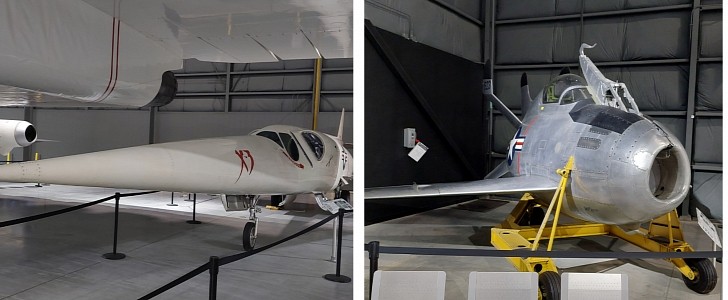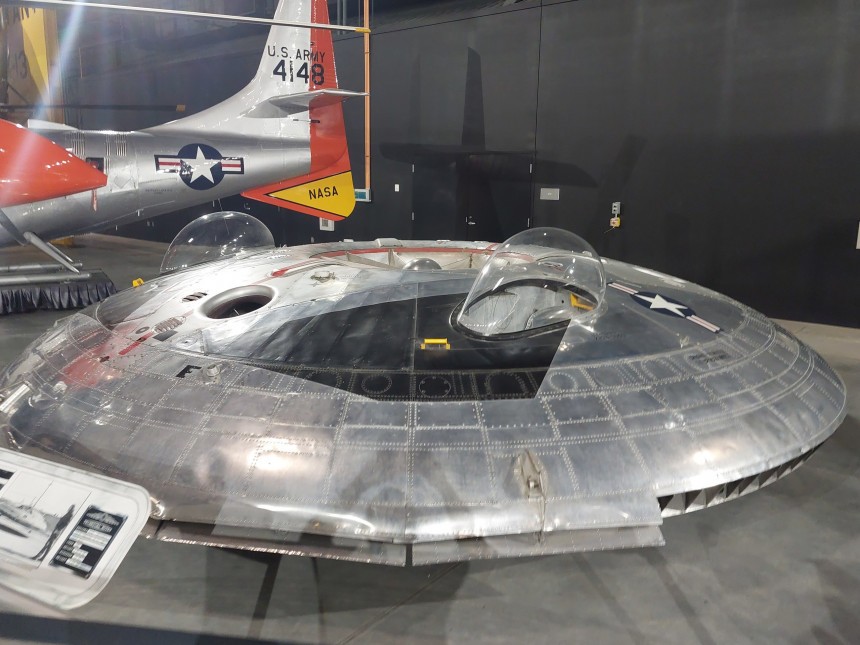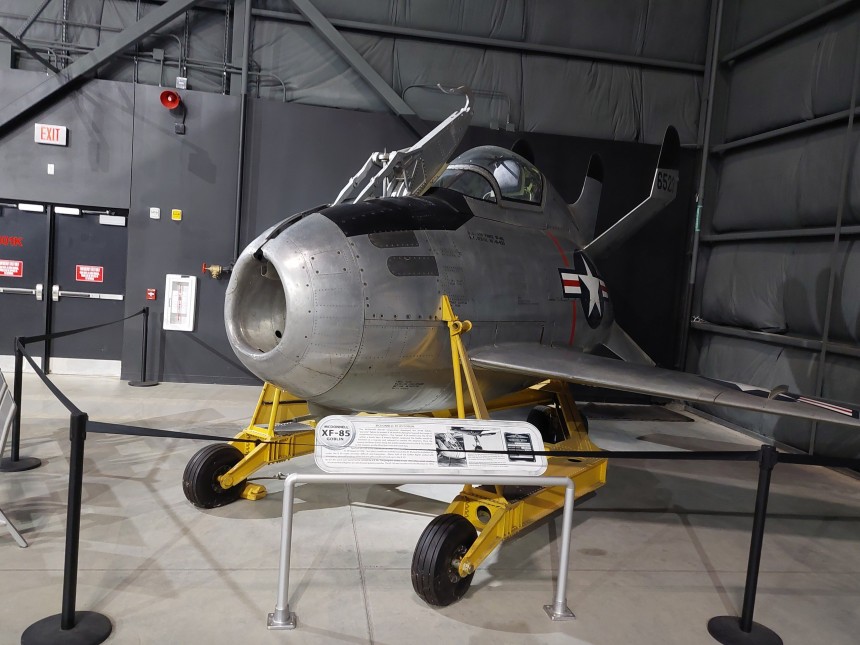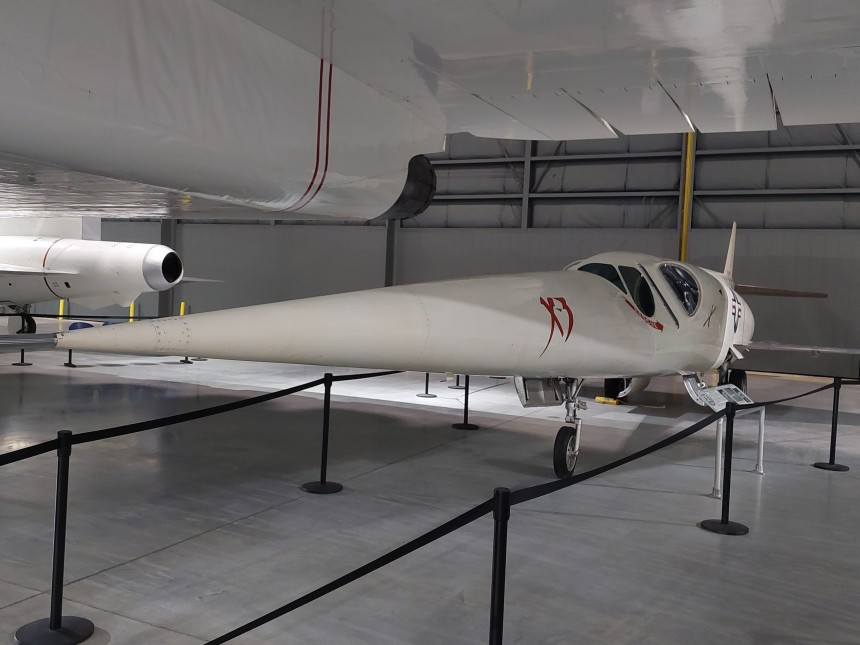It's the procrastinator's Spring Cleaning here at autoevolution. After nearly a year of traveling the country showcasing the coolest automotive and aeronautical curiosities, a few sadly didn't make the cut the first time.
So to kill two birds with one stone, we decided to do something for a bit of fun. Let's take a look at some of the weirdest, wackiest, and downright silly airplanes on display at the largest military aviation museum on the planet, the National Museum of the United States Air Force in Dayton, Ohio. Get ready, folks. There are some pretty strange birds around those parts.
Starting things off with a bang (hopefully not literally), the Avro Canada VZ-9 Avrocar was as bizarre of a VTOL Concept as ever did exist. Built by a Canadian subsidiary of a classic British aerospace company, the Avrocar was designed by a Brit by the name of John Carver Meadows Frost.
A man who's mostly known as one of the brains behind the Acro CF-100, the only Canadian-designed jet fighter ever to enter production. Safe to say, Frost was by no means a foolish man. He was one of the smartest minds in all Anglo-Canadian aviation, in fact. So why he believed it was a good idea to build a shiny metal flying saucer with three Continental J69-T-9 turbojet engines is anyone's guess.
Originally intended to be some bizarre fighter/interceptor, the design was scaled back, scaled back again, and then scaled back some more. Until all that was left were two concepts, the Avrocar, and the larger Y-2, both of which were intended to compete in the U.S. Air Force's "flying Jeep" VTOL initiative.
Test pilots cursed the machine as nearly unflyable, resulting in the project's cancelation by 1962. From there, the remaining airframe spent the rest of its days to present in the experimental wing of the USAF Museum, where it continues to amuse patrons that actual money was spent in great quantities getting this thing off the ground.
The U.S. Air Force had a dillema in the late 1940s. They had this shiny new gargantuan of a Convair B-36 Peacemaker to play with, but no equivalent jet fighter that could even remotely match its range. Novel jets like the Lockheed Shooting Star, Grumman Panther, and Republic Thunderjet may have been able to keep up for most of a sortie, but they would all inevitably have to peel off and leave the colossal six-engined bomber to fend off MiGs all on its lonesome.
Thus, a new direction was needed to solve this issue. While the notion of just extending the range of normal jet fighters might have been more prudent, we have to remember that we're talking about the United States Military in the very early Cold War, meaning they had money to burn on less traditional ideas. At 14 feet and ten inches (4.52 m) long, 21 feet (6.4-m) wide, and weighing in around the same as a modern fully-load Chevy Suburban, the XF-85 Goblin was an all-new approach to bomber defense.
These little fighters would hang from either the wings or the engine bay from bombers like the aforementioned B-36, but also legacy models like the Boeing B-29 and B-50 Superfortress. The idea was that if enemy Soviet jets were detected in the vicinity of an American bomber's objective, these parasite fighters would deploy from their harnesses, engage the threat, and with great difficulty, return to their mothership. If the more astute among you find this to be a stupid idea, that was the very same sentiment Air Force top brass felt about the XF-85 after less than a full year of testing.
Okay, so even in the early 1950s, it was understood that sleek, streamlined airframes do infinitely better at supersonic speeds than ones that aren't. But even by streamlining standards, the Douglas X-3 Stiletto was downright outrageous. It was powered by twin Westinghouse XJ34-WE-17 after burning turbojet engines throttling 3,370 lbf (15.0 kN) of thrust each. Good for a top speed, just nudging the speed of sound.
Though the X-3 wasn't all that much faster than the Bell X-1 from five years prior, the Stiletto's goal was to fine-tweak vital flight systems needed for long-term sustained flight at the knife-edge of the sound barrier. As it happens, flying supersonic for long spans of time is a lot more complicated than we non-engineers could ever fathom. A notion made obvious when test pilots ran into an absolute devil of a problem called inertia coupling while flying the Stiletto.
A phenomenon in which high-speed airplanes with insufficient control surface suddenly get the urge to oscillate violently at high subsonic and supersonic speeds. Somehow, by some miracle, none of the several encounters of inertia coupling found during X-3 flight tests ever killed any test pilots or so much as left a scratch on the airframe. This data led to groundbreaking engineering techniques in jet airplane design that are still very much appreciated to this day. It may have looked like and been named after a women's dress shoe, but it can't be argued this wacky airplane contributed a fair bit in its short life.
Avro Canada VZ-9: Looks Like a UFO, Flies Like It's Drunk
A man who's mostly known as one of the brains behind the Acro CF-100, the only Canadian-designed jet fighter ever to enter production. Safe to say, Frost was by no means a foolish man. He was one of the smartest minds in all Anglo-Canadian aviation, in fact. So why he believed it was a good idea to build a shiny metal flying saucer with three Continental J69-T-9 turbojet engines is anyone's guess.
Originally intended to be some bizarre fighter/interceptor, the design was scaled back, scaled back again, and then scaled back some more. Until all that was left were two concepts, the Avrocar, and the larger Y-2, both of which were intended to compete in the U.S. Air Force's "flying Jeep" VTOL initiative.
Test pilots cursed the machine as nearly unflyable, resulting in the project's cancelation by 1962. From there, the remaining airframe spent the rest of its days to present in the experimental wing of the USAF Museum, where it continues to amuse patrons that actual money was spent in great quantities getting this thing off the ground.
McDonnell XF-85 Goblin: A Parasite Fighter In Name Only
Thus, a new direction was needed to solve this issue. While the notion of just extending the range of normal jet fighters might have been more prudent, we have to remember that we're talking about the United States Military in the very early Cold War, meaning they had money to burn on less traditional ideas. At 14 feet and ten inches (4.52 m) long, 21 feet (6.4-m) wide, and weighing in around the same as a modern fully-load Chevy Suburban, the XF-85 Goblin was an all-new approach to bomber defense.
These little fighters would hang from either the wings or the engine bay from bombers like the aforementioned B-36, but also legacy models like the Boeing B-29 and B-50 Superfortress. The idea was that if enemy Soviet jets were detected in the vicinity of an American bomber's objective, these parasite fighters would deploy from their harnesses, engage the threat, and with great difficulty, return to their mothership. If the more astute among you find this to be a stupid idea, that was the very same sentiment Air Force top brass felt about the XF-85 after less than a full year of testing.
Douglass X-3 Stilleto: Literally Why???
Though the X-3 wasn't all that much faster than the Bell X-1 from five years prior, the Stiletto's goal was to fine-tweak vital flight systems needed for long-term sustained flight at the knife-edge of the sound barrier. As it happens, flying supersonic for long spans of time is a lot more complicated than we non-engineers could ever fathom. A notion made obvious when test pilots ran into an absolute devil of a problem called inertia coupling while flying the Stiletto.
A phenomenon in which high-speed airplanes with insufficient control surface suddenly get the urge to oscillate violently at high subsonic and supersonic speeds. Somehow, by some miracle, none of the several encounters of inertia coupling found during X-3 flight tests ever killed any test pilots or so much as left a scratch on the airframe. This data led to groundbreaking engineering techniques in jet airplane design that are still very much appreciated to this day. It may have looked like and been named after a women's dress shoe, but it can't be argued this wacky airplane contributed a fair bit in its short life.











